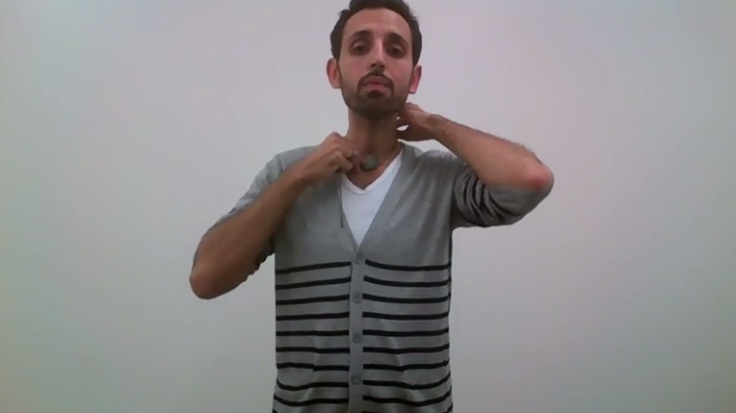UCLA Engineers Develop WearSens, A Food Diary You Can Wear Around Your Neck

Food diaries are a tried and true way experts recommend individuals looking to lose weight maintain, be it actual pen to paper or a popular app, like MyFitnessPal (which tracks food and fitness). But as Popular Science (PS) pointed out, these become hard to keep up with and, in some cases, aren’t always accurate. Engineers from the University of California, Los Angeles (UCLA) think they have the answer.
WearSens is a smart necklace built with piezoelectric sensors to track the vibrations near an individual’s neck. “As food or liquid moves down the throat, it creates quakes that rise to the skin around the neck, and the sensors record the tremors,” PS reported. Chewing something soft and moist will “quake” different than chewing something hard and crispy.
Majid Sarrafzadeh, co-developer and electrical engineer at UCLA, said in order to personalize the necklace, individuals wash down a 3-inch Subway sandwich with a 12-ounce drink. The quakes or vibrations are then transmitted to a smartphone app in order to establish a sort-of baseline for an individual’s swallowing patterns, including if what they’re swallowing is a solid or a liquid.
In a demo video uploaded to YouTube in March 2014, the app asks for an individual’s age, height, weight, and their goal, whether it’s to lose, maintain, or gain X amount of weight. The data informs the app if wearers have eaten, say, breakfast; how fast they eat their food; and if they’ve missed a meal. Underneath each habit is also a piece of advice. For example, if a user missed a meal, the app mentions how skipping meals is the root of fatigue and afternoon slumps, plus some smart ways to make sure they don’t miss another.
Sarrafzadeh and her team conducted a small study published in the IEEE Sensors Journal, in which the results showed WearSens is 90 percent accurate; “it could also precisely distinguish hard and soft foods — sandwiches, nuts, chips, chocolate or hamburger patties — about three-quarters of the time,” PS cited.
The engineers involved, however, conceded there’s more research to be done. So far, the technology has only been tested (with a small menu) in 30 people, and some experts are skeptical WearSens will be able to detect the thousands other ingredients and foods individuals eat on a daily basis. “It's an interesting study, no doubt, but I want to see how it performs in a larger community,” Edward Sazonov, an electrical engineer of the University of Alabama, told PS.
If not a diet tracker, WearSens may have potential to track other medical conditions, though these findings are preliminary. One such example is using the necklace to track the vibrations a pill makes, helping wearers keep better track of their medicine schedule.



























